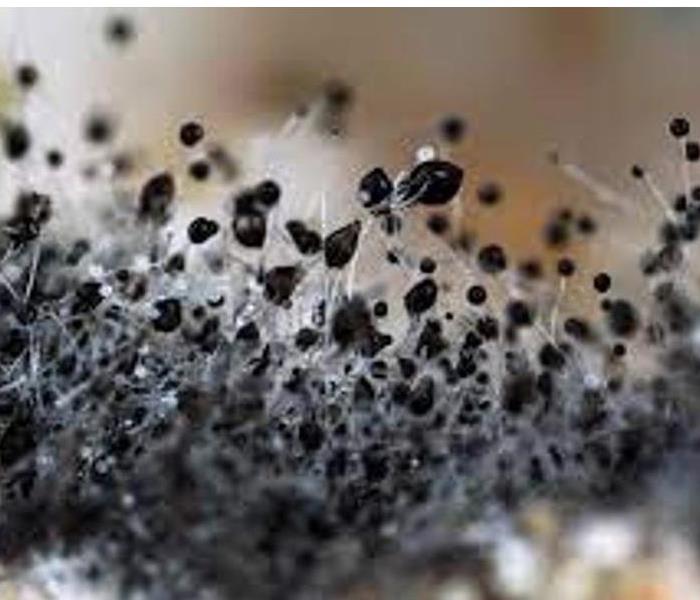WHAT DOES MOLD NEED TO GROW?
9/21/2021 (Permalink)
Without the following six things, mold is unable to grow. When reading this information, carefully consider the environment in your home and whether or not it’s ideal for mold growth.
We’ve also included steps you can take at each point to fix these problems so that mold can’t grow in your home.
1. MOISTURE
Mold is a living thing, which means it needs moisture to survive. In most cases, this is the biggest factor in determining whether or not mold grows in a home since many of the other items on this list are unavoidable.
In a home, moisture can come from a number of sources. Getting to the root of the problem is vital to solving it. For example, if you have a leaking pipe under your home, you need to have that fixed or the moisture is going to continue happening even if you replace the wet walls. If your home has been flooded, one of the first things you need to do is get it dry before mold starts to grow.
Something small you can do to avoid a buildup of moisture in your home is to squeegee and towel dry your sinks and shower after using them. This is one of the simplest steps you can take to prevent mold growth in your home.
2. OXYGEN
Another thing mold needs to grow is oxygen. Unfortunately, there’s nothing you can really do to prevent your home from having oxygen in it. What you need to recognize, however, is that oxygen can fit through even the tiniest of spaces. You want to ensure your home is completely sealed from the outside. This means having high-quality insulation that keeps all air from getting into your walls where mold can grow unseen.
3. FOOD
Without a food source, mold can’t grow. Mold can feed on a number of things, including meat and vegetables, drywall, material, and wood. There are a couple of things you can do to avoid feeding the mold in your home.
First of all, maintaining a clean home free of food waste will prevent mold from growing on your kitchen counter, under your couch, and in your refrigerator. Limit eating to only areas of the home with hard flooring and clean them daily.
4. DARKNESS
Ultraviolet (UV) light from the sun kills most mold and spores, which is why you don’t see it growing outside in the open. That also means when you’re looking for mold, you’ll need to check dark nooks and crannies where it might be hiding.
This is something else that you can’t prevent unless you install UV bulbs in every part of your home to completely light it up all the time. But that would be expensive and impossible to maintain. Instead, use this as a warning to pay special attention to areas that are dark in your home. Those are the ones that need to be kept dry and free from mold food sources more than areas that get natural sunlight.
5. WARMTH
The last thing mold needs for an ideal environment is warmth. This just means temperatures above freezing, which is why you may see mold in your refrigerator but won’t see it in your freezer unless it’s not working.
Mold grows fastest in temperatures above 60 degrees. Since your home should always be above 60 degrees, it means that mold can grow inside year-round. We don’t recommend shutting off your furnace to prevent or stop mold growth since that can lead to some other serious problems, but we do recommend paying attention to those places where mold may grow even in the winter.
You’ll also want to be extra diligent in the summer months. As the temperature gets higher, mold can grow even faster. There are also more mold spores in the summer months because they’re thriving outside.
6. MOLD SPORES
Something you may not have thought about is the fact that for mold to grow, spores must be present. Mold is similar to a plant in that it sends seeds out into the world to reproduce. The truth is that mold spores are already floating around in the air outside and inside of your home. However, with nowhere ideal to latch onto, they quickly die and won’t grow.





 24/7 Emergency Service
24/7 Emergency Service
